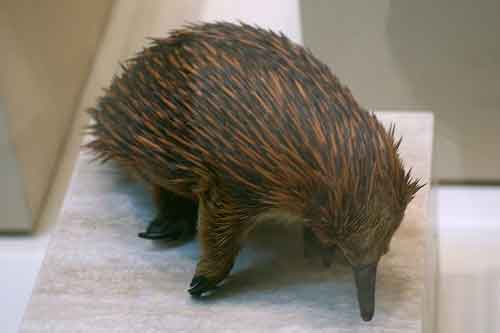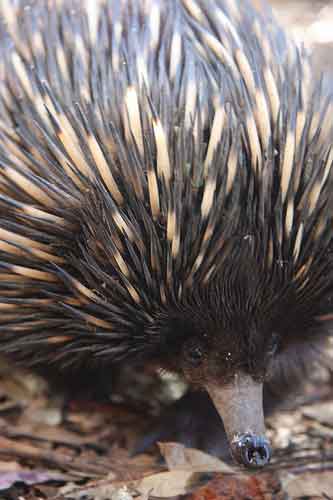Short-beaked echidna tachyglossus aculeatus



Level of threat
This species is fairly widely spread throughout Australia and is not deemed under threat at this time.
Conservation Efforts
The only real cause for concern for these timid creatures is that they get crushed on the roads by passing tourists. Apart from that, the IUCN has no major concern for this species.
Their other great adaptation, the beak, helps them hunt for worms and other small animals hiding beneath the steam bed. It has eletroreceptors capable of detecting small electric charges created by the change in the current caused by small prey. This amazing adaptation is said to have evolved in the near evolutionary past( that means a few million years) ago.
Bet you didn't know...
- Echidna's can live upto 50 years in captivity. This is a very long life span for an animal of that size.
- An Echidna's tongue is used to hunt ants and termites from hollow logs and from within the ground.
- Short-beaked echidnas can also curl up to protect their undersides when under attack.
Behavior
To conserve energy the Short-beaked echidna burrows in the soil and hibernates from autumn until spring. They can sense others of the species by smell and have overlapping terriroies. Most of the time there are few predators that could take on a full-grown Echidna, what with the spines and all. Only juveniles and young ones in burrows maybe exposed to threat from feral pigs, dingos and other introduced species.